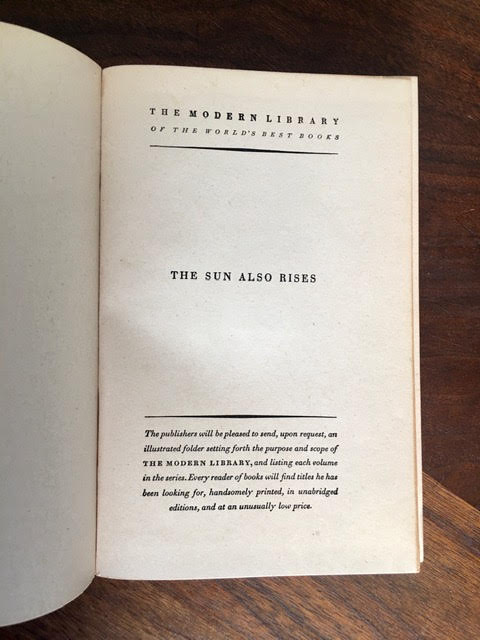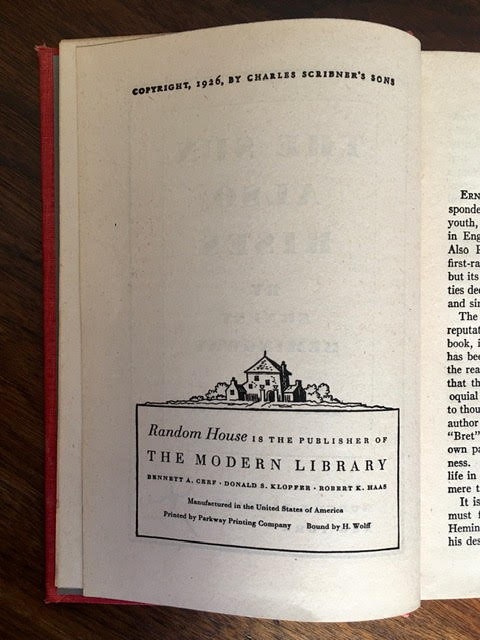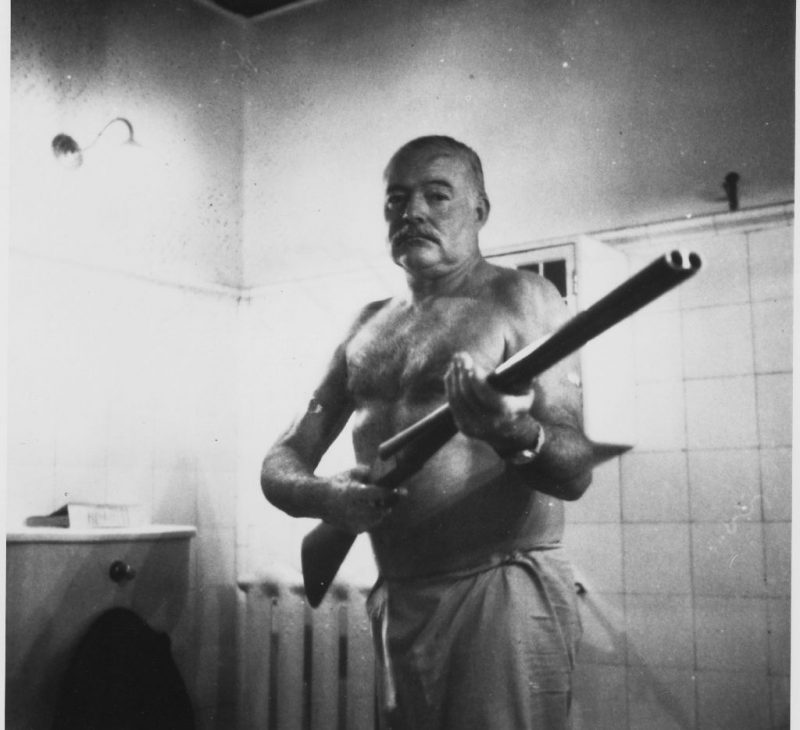SOLD. ‘The Sun Also Rises’ Book by Ernest Hemingway 1950
First Modern Library Edition 1950. 259 pp. Random House is the publisher of The Modern Library, New York. Bennet A. Cerf, Donald S. Klooper, Robert K. Haas. Manufactured in the United States of America. Printed by Parkway Printing Company. Bound by H. Wolff. Copyright 1926 by Charles Scribner’s Sons Introduction by Henry Seidel Canby. Red cloth stamped in black and gilt. No jacket. Text clean. No marks. Binding tight. Overall Very Good except of aging/fading on extrerior spine.
Note: see correction of spelling mistake on page 181 “”Stopped looking at”. If you happen to get your hands on a first edition copy of The Sun Also Rises, skip to page 181. Here, you’ll find a misprint – the text reads “stoppped” instead of “stopped”. This typo appears in only the earliest issue of the book and was quickly corrected by the printer.
Read more about Hemingway’s bad grammar:https://www.theguardian.com/books/2020/aug/02/ernest-hemingway-published-works-littered-with-errors-study-finds
Acquired in New York in the early 1990’s.
Estimated at $85.
SOLD.
The Sun Also Rises is a 1926 novel by American writer Ernest Hemingway that portrays American and British expatriates who travel from Paris to the Festival of San Fermínin Pamplona to watch the running of the bulls and the bullfights. An early and enduring modernist novel, it received mixed reviews upon publication. However, Hemingway biographer Jeffrey Meyers writes that it is now “recognized as Hemingway’s greatest work”, and Hemingway scholar Linda Wagner-Martin calls it his most important novel. The novel was published in the United States in October 1926 by Scribner’s. A year later, Jonathan Cape published the novel in London under the title Fiesta. It remains in print.
The basis for the novel was Hemingway’s trip to Spain in 1925. The setting was unique and memorable, depicting sordid café life in Paris and the excitement of the Pamplona festival, with a middle section devoted to descriptions of a fishing trip in the Pyrenees. Hemingway’s spare writing style, combined with his restrained use of description to convey characterizations and action, demonstrates his “Iceberg Theory” of writing.
The novel is a roman à clef: the characters are based on real people in Hemingway’s circle, and the action is based on real events. Hemingway presents his notion that the “Lost Generation“—considered to have been decadent, dissolute, and irretrievably damaged by World War I—was in fact resilient and strong. Hemingway investigates the themes of love and death, the revivifying power of nature, and the concept of masculinity.








